After reviewing the whole SanDisk SD card line-up recently, it seems obvious that we all need to move more and more data around, faster and faster. So how to choose which SD card reader for getting pictures and videos off our cameras?
Looking on Amazon.com reveals a whole mess of USB 3.0 SD card readers. Some as cheap as $5, others are more expensive costing $10 and $15. But how do you really know what you’re getting? The average Amazon.com review isn’t all that comprehensive.
Three USB 3.0 SD card readers were picked from the pile (all around $10), put under the microscope, and then a bunch of SD cards were thrown at them to see what happened. Surprisingly, each SD reader had its own advantages and disadvantages with no clear winner. Choosing which one will come down to personal preference, mostly.
To get started, here’s a table covering all the basic features of each model:
| Transcend USB 3.0 SD card reader (TS-RDF5K) | Anker Uspeed USB 3.0 SD card reader (68UNMCRD-B2U) | Kingston MobileLite G4 USB 3.0 SD card reader (FCR-MLG4) | |
| SD slot | YES | YES | YES |
| MicroSD slot | YES | YES | YES |
| Simultaneous SD-&-MicroSD |
no | YES | YES |
| UHS-I | YES | YES | YES |
| UHS-II | no | no | YES |
| Activity Light | YES (blue) | YES (red) | no |
| Warranty | 2-year | 1.5-year | 2-year |
| Price | $6.99 | $8.99 | $10.71 |
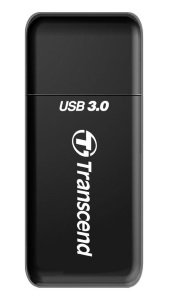 |
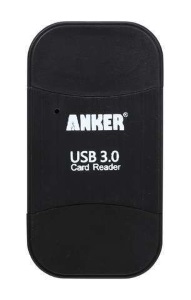 |
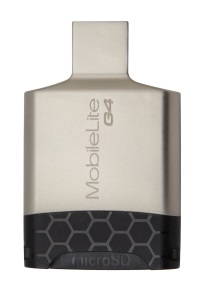 |
The Transcend is the cheapest at $7 for black and $8.50 for white. (Sometimes it can be had for as low as $5.) It also seemingly has the least going for it with no simultaneous support for both slots nor support for the relatively new Ultra High Speed 2 (UHS-II) bus. On the plus side, it does have a soft, blue activity light on it. It’s also narrow enough that it is unlikely to block adjacent USB ports. (The Anker and Kingston are both much wider and are highly likely to block adjacent USB ports.)
The Anker is priced a couple dollars more, but can read and write from both the SD and MicroSD card slots simultaneously (each slot appears on the computer as a separate drive.) It also lacks support for UHS-II bus, but has a red activity light.
The Kingston is a few dollars more and seems to be nearly perfect in that it has support for simultaneous use of both SD and MicroSD slots as well as providing “future-proofing” by supporting the relatively new UHS-II bus. The only thing it is missing is an activity light.
Benchmarking
Two SD cards (SanDisk Extreme and Extreme Pro) and one MicroSD card (Lexar 633x) were used in testing these SD card readers. All 3 cards are UHS-I capable.
The SanDisk Extreme has a maximum read speed of around 72MB by all the readers. The performance was nearly identical for all 3 readers with a small advantage to the Kingston in blocksizes below 64KB.
The results with the Lexar 633x MicroSD card shows that not all readers are made equal. The Kingston is the fastest at 90MB/s, while the Transcend peaks at 88MB/s, and the Anker tops out at 84MB/s. A difference of about 7% from the two extremes.
The SanDisk Extreme Pro shows that again the Kingston dominates over the Anker, but only by 10%, at most.
What conclusions can we draw from these tests?
For SD cards whose performance falls:
- Below 80MB/s, all 3 readers perform the same.
- Above 80MB/s, there is marginal (5 to 10%) performance advantage with the Kingston and Transcend readers.
Which to choose?
They’re all pretty fast UHS-I SD card readers, so unless that extra 5 to 10% performance really matters to you, it mostly comes down to personal preference.
The Kingston MobileLite G4 is the fastest, had the most features, and is future-proof with its support for the relatively new UHS-II bus. No activity light, though.
The Transcend USB3 SD reader is the cheapest, but does not support simultaneous use of both the MicroSD and SD slots. Still, it is nearly as fast as the Kingston, is narrow enough not to block USB ports, and has a cool blue activity light.
The Anker Uspeed is stuck in the middle and unable to really distinguish itself from the Kingston and the Transcend. The only cool feature it has is the rear snap-on cap to cover the cards on the back. That’s kind of nifty in the sense that the MicroSD and regular SD cards are contained in the unit and becomes something like a USB Flash Drive. But other than that, the Anker SD card reader is unremarkable.
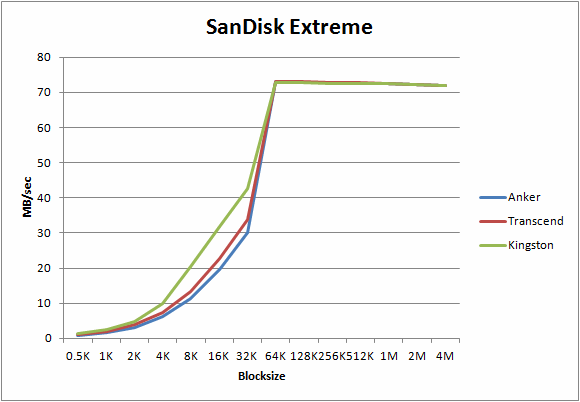
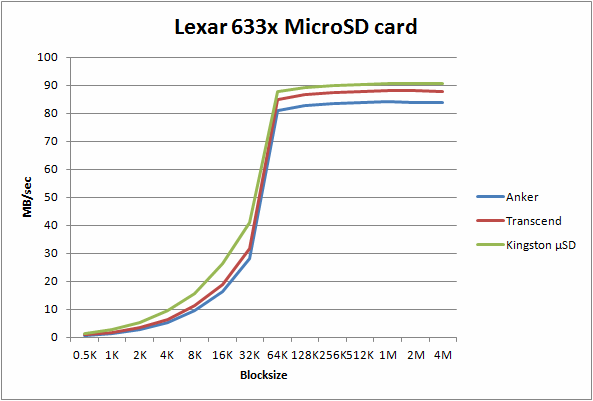
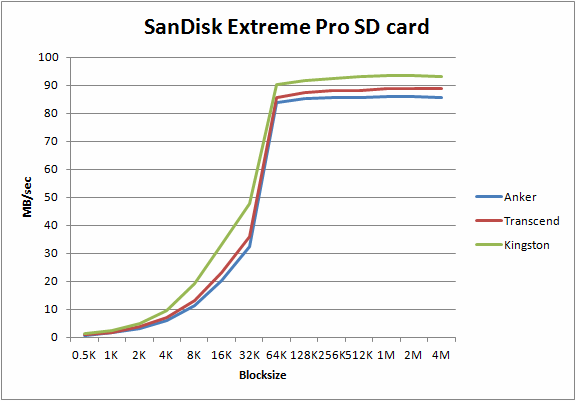
16 replies on “Which portable USB 3.0 SD / MicroSD card reader is the best?”
Thank you so much for this helpful review, these were the three card readers I was looking at, so this was literally the perfect review!
You’re welcome. I’m glad it was able to help you out!
Which compact USB 3.0 CF + SD card reader do you recommend? (For example, for Nikon D810 users — where the camera has 1 SD slot + 1 CF slot).
I understand those reviewed above only take SD; this is good for most applications, but higher end dslrs still are using CF (and weird mixes with SD like the D810).
[I believe the SanDisk latest slim upright reader is extremely good — but its not exactly pocket size and is meant to sit on the desk.]
P.S. I followed your link from an Amazon review you did, regarding best SanDisk cards. Unfortunately, I don’t trust Canon’s implementation of memory writing. The 70D graph is far too overlapping — there’s probably a physical limitation on the camera, not the card. The cards have a wide enough write difference that you should have seen statistically visible variation. I think you would get a different result with the Nikon D750, for example.
https://www.pretzellogix.net/wp-content/uploads/2014/09/70D-continuous-shooting.gif
Yes, that was my conclusion as well. Borrowing some high-end Nikon DSLRs is on my list of things to do as I’d like to examine how the Nikon performs. The D750 is on my list as is the D3200. I hope to have an update to this article in a month.
That’s a tough question. Making a portable SD card reader is easy, but combining SD + CF into 1 unit may require extra circuitry and/or compromises. I’ll have to put it on my list of things to take a look at.
Hello again, Pretzel,
Thanks for the feedback. Here is a good resource I found (after much searching). I my mind, it very clearly comes down to the LEXAR, SANDISK, or the KINGSTON (for USB 3.0 multi-card readers). Speeds up to 150MB/s were achieved, whereas others peaked at 120MB/s.
People don’t realize that the onboard software dramatically can change speeds. 1st limitation = your card’s speed. 2nd = the hardware. 3rd = software efficiency (where the brand name of the reader is often important).
Based on my own research, the SanDisk is the most problematic due to very, very easily bent pins and terrible, cheap construction, but on a good PC system performs the fastest with SanDisk cards for sustained speeds — its probably the most attractive, however, the shoddy construction should NOT be supported in my opinion, as its a pricey unit and one bent pin destroys it. The Lexar card does well over-all on a Mac, and best with Lexar cards, it costs as much or more than the Sandisk but some think its ugly. The Kingston performs almost exactly the same as those two, at about half the cost, with one caveat, that it may require a firmware update to become UDMA 7 compliant (but is an easy process, just frustrating if you didn’t know in advance), and I personally think its ugly. The Transcend reader has a good design, but isn’t as fast as the others. I will buy the Lexar one, even though I am using SanDisk cards:
http://blog.photoshelter.com/2014/10/photoshelter-card-reader-database-why-you-should-upgrade/
[…] Kingston MobileLite G4 was benchmarked against 2 other portable USB 3.0 SD card readers and came out with top marks. Definitely a great value at […]
Would you compare the USB power consumption too?
This is good to know for power-constrained devices like smartphones and the Raspberry pi.
The value on the label is often inaccurate…
Unfortunately, I’ve already gotten rid of most of the USB readers, so I’d have to purchase new ones to test them again.
If you are curious, i’ve measured the power usage of my new Kingston MobileLite G4 with [a USB current measuring device]. These were the results:
<80mA (reading a microSD)
<150mA (writing a microSD)
Peak surface temperature during stress test would be also interesting to know. I've found this Kingston reader gets hot very quickly…
I’ve used a similar device found at Adafruit which measures the Voltage and Current draw on the USB port. I wasn’t too concerned with current draw, but in light of the Raspberry Pi (and similar) craze, it’s probably a good idea to measure current, too. I’ll see if I can re-acquire the other 2 for current measuring.
Btw, nice to see you back! 🙂
Do the cards disappear completely in the slots with the Kingston reader, or do they stick out?
[…] however, except Kingston MobileLite, all other readers have limited slots (especially no micro SD). Pretzel Logic reviews three readers and recommends Transcend and Kingston models above […]
The current conclusions do not rexactly match the shown data.
> Below 80MB/s, all 3 readers perform the same.
Huh?? The blocksizes at the bottoms of the graphs are hard to parse, but in the in the approx 8K-32K blocksize range, speeds vary by 10-14MB/s. At roughly 8-32K blocksize, the diff between 20MB/s and 34MB/s is approx a 1/3 difference in speed.
>Above 80MB/s, there is marginal (5 to 10%) performance advantage with the Kingston and Transcend readers.
This isn’t as significant as the differences at smaller block xfer, but 8MB/s might not be so marginal depending on the amount one is xferring.
I’d like to see an 2016 update on newer card+hub units, focusing on, say, USB3.1 support, UHS-II only readers.
I wrote the review from the perspective of someone transferring images and videos on/off their cards. The “summary” is focused on block sizes above 64k (and I should have said that) since most file sizes will be significantly about 64KB. Small block transfer is unimportant unless you’re putting lots of small text files on your SD cards, but that seems highly unlikely.
And you’re right about re-visiting newer cards/hubs units, etc. UHS-II is still largely unimportant though. I only know of like 5 or 6 cameras which actually use UHS-II. Most everything is still UHS-I.